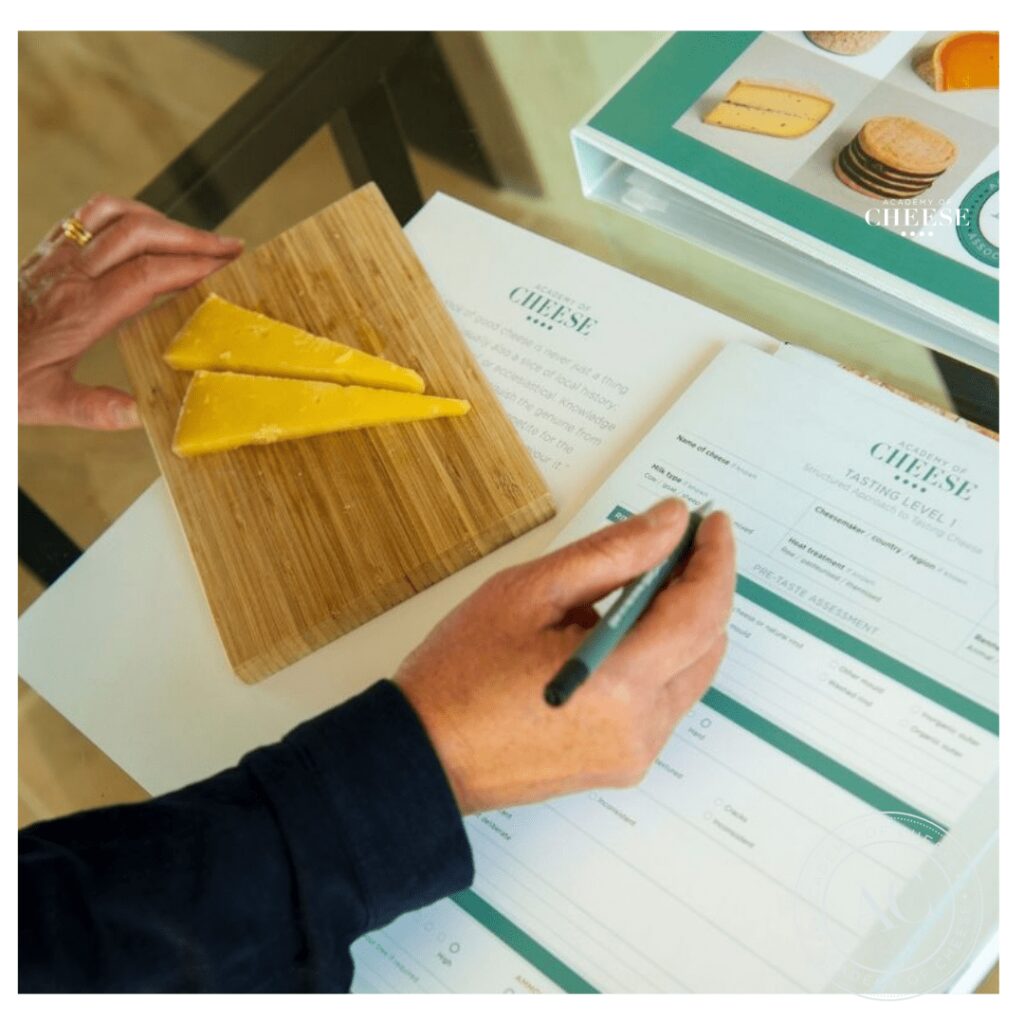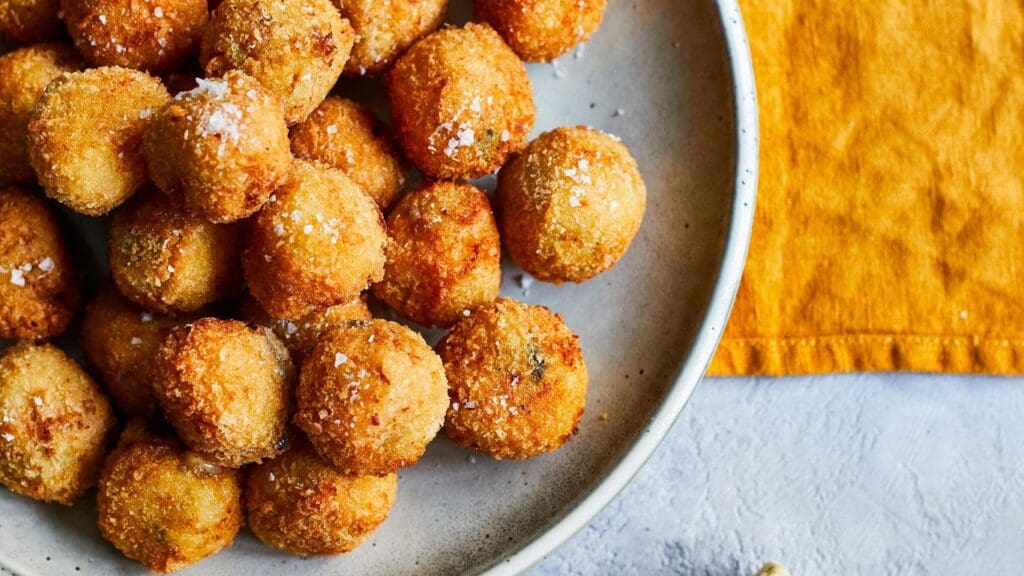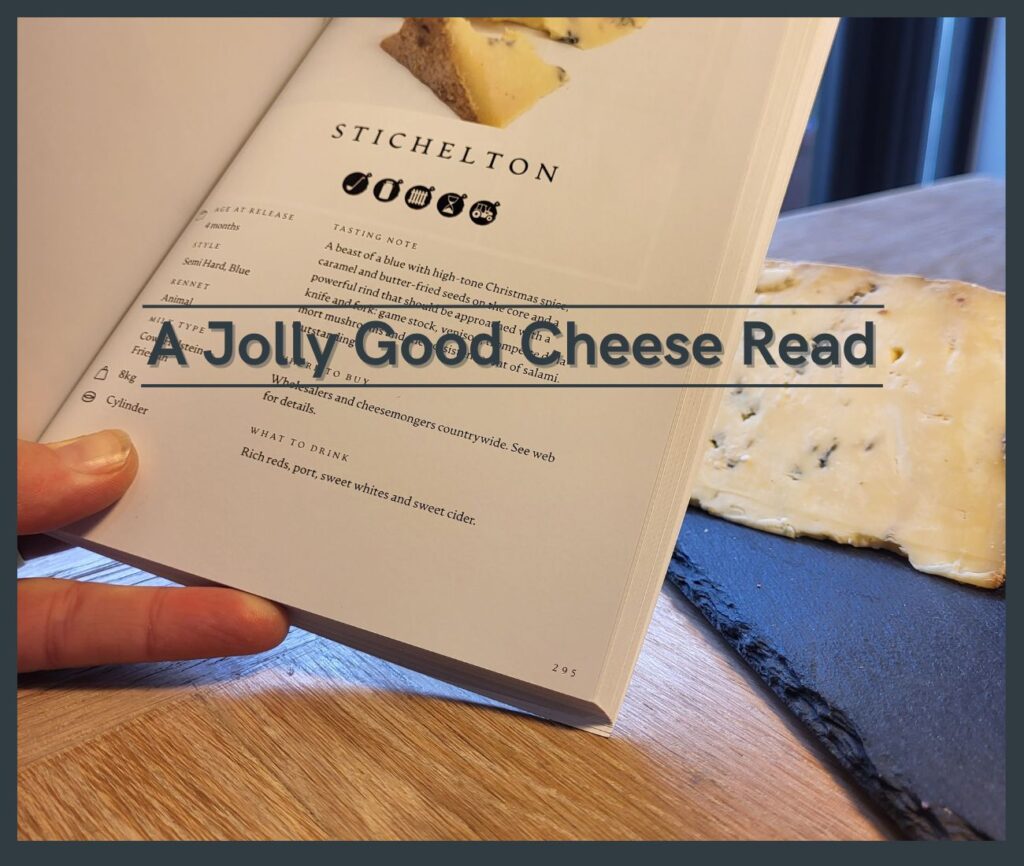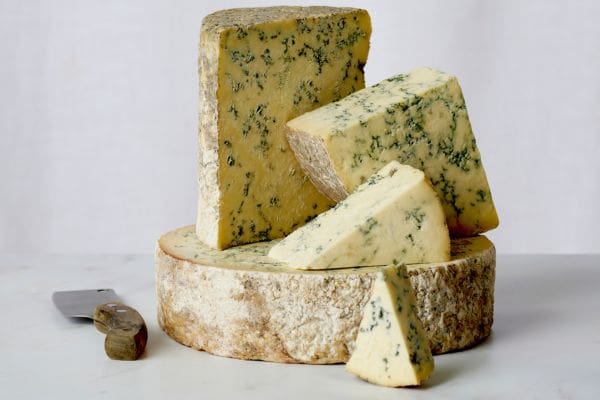
Britain’s most famous blue cheese, Blue Stilton PDO, is widely regarded as one of the world’s finest. Protected by its PDO (Protected Designation of Origin) status, there are now only six Stilton makers left in the World, with Long Clawson Dairy being a renowned Stilton maker in Melton Mowbray.
Stilton is one of those super versatile cheeses that is as good on a cheeseboard as it is for cooking with. As a “Crumbly” on the Academy of Cheese Make Post-Make classification, it is perfect salad component, whilst on the other hand, its creamy texture makes it ideal for stirring through pasta for a rich, savoury note, or crumbling into fajitas and pies for an unexpected piquancy.
Before we put on our aprons and head into the kitchen, however, let us give you the low-down on this King of cheeses.
Blue Stilton: A Brief History
Its roots stretch back to at least the early 18th century and the village of Stilton in Cambridgeshire, when it was a hard, creamy cheese. But over time, production concentrated in the Midlands and the cheese became the popular blue of today. In 1936, the Stilton Cheese Makers Association was formed to maintain the quality standards and protect the trademark of Stilton.
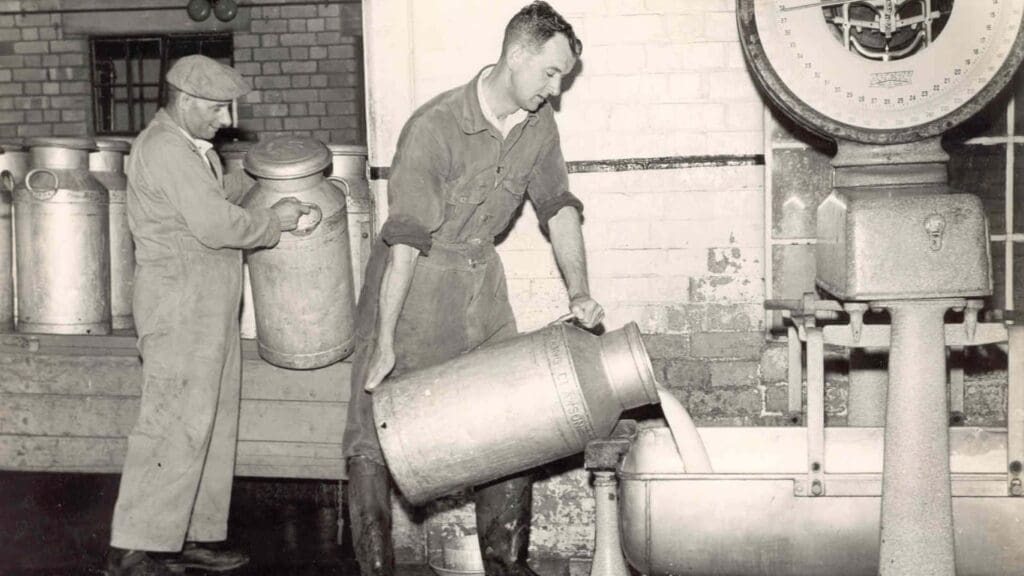
The Different Varieties of Stilton
Blue Stilton®
Long considered “The King of Cheeses” by many connoisseurs, Blue Stilton® is one of a handful of British cheeses granted the status of a “Protected Designation Origin” (PDO) by the European Commission. This means only authorised dairies can make true Stilton and only using the pasteurised cow’s milk sourced from the three counties of Leicestershire, Nottinghamshire & Derbyshire. Due to the addition of Penicillium roqueforti, the cheese should have an even distribution of blue veining, radiating from the centre.
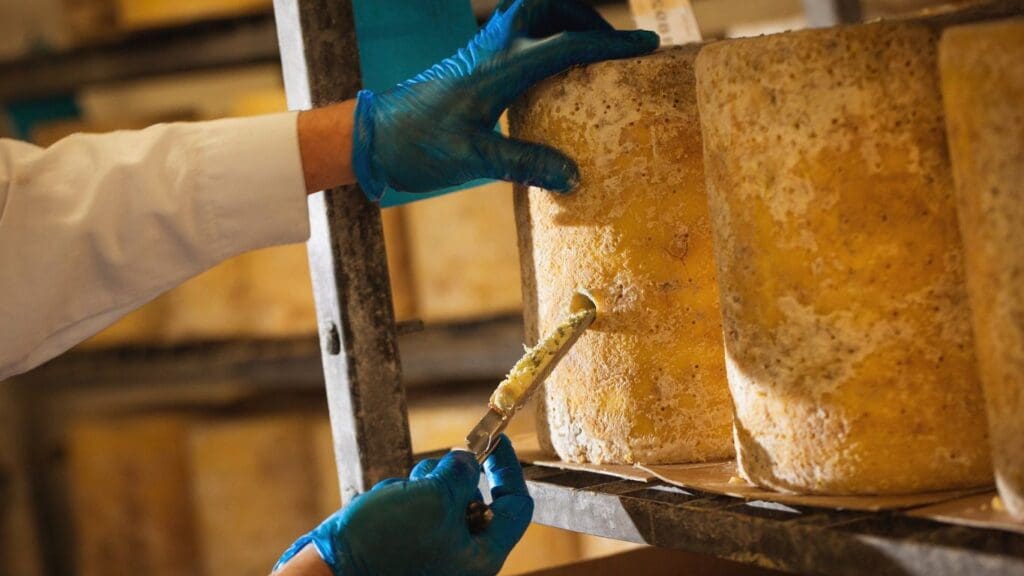
What Does Blue Stilton Taste Like?
Young Stilton can be very crumbly and have a sharp or acidic taste. As it matures – in as little as a further 2 weeks – the texture becomes creamy or butter like, and the taste of the Stilton becomes more rounded and much richer with complex dairy and umami flavours.
What to Pair with Blue Stilton
Whilst Port and Stilton is a match made in heaven, there are so many more drinks that are worthy of a look-in. As a general rule, you do need a drink with depth of flavour to stand up to the cheese’s piquant saltiness. The Stilton Cheesemakers’ Association recommends any dessert or pudding wine – Sauterne, Gewurztraminer, Muscat, Sweet dark Olorosso Sherry – or a full bodied, robust red wine such as a Shiraz. Whilst Patrick McGuigan, in the latest book he co-wrote with Mathew Carver, The Cheese Life, suggests another Portuguese fortified wine, Madeira, saying that its fresh acidity makes it a more refreshing partner for Stilton. For the non-traditionalists, try a sweet velvety stout or smoky whiskey. Add some pickled walnuts, pears, figs and honey to the plate and now you’re talking!
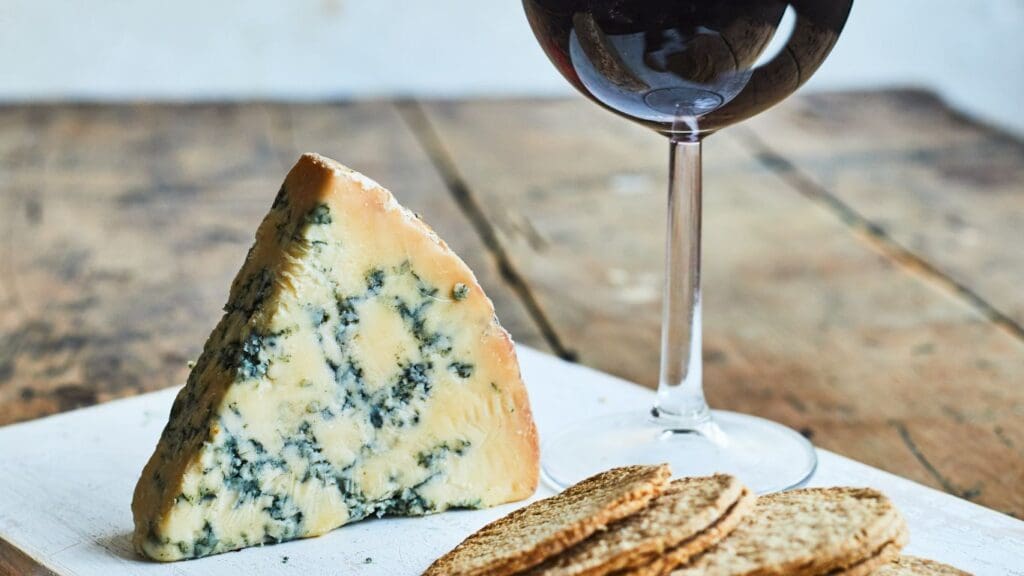
Other Types of Stilton
What is White Stilton PDO?
White Stilton PDO is a variety of traditional Blue Stilton®, with the same PDO regulations, meaning the milk must originate from the three counties of Derbyshire, Leicestershire or Nottinghamshire to be labelled as Stilton. It doesn’t, however, have any Penicillium roqueforti added and hence none of the blue veins or mould characteristic of its older, bolder sister cheese. It is essentially a milder and milkier version of Blue Stilton®; aged for only four weeks, with a fresh, sweeter note, which lends itself well to blending with fruits and spices.
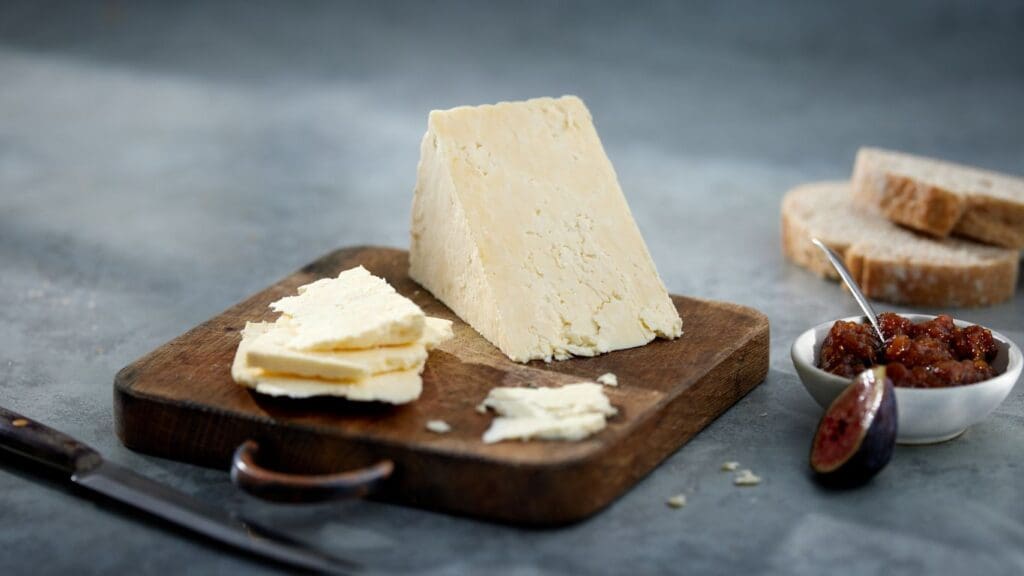
Blended Stilton
Any make of cheese can, in theory, be blended with other ingredients and Clawson are known to do this with great success. Blended cheeses have their own Post-Make class within the Academy of Cheese’s Make Post-Make classification system, which means the extra ingredient(s) are added AFTER the initial curd is made. Accordingly, this can apply to any Make of cheese, whether that’s a Soft, Crumbly, Hard or Hard Cooked type.
Tasting Toolkit
Three useful tools from the Academy Of Cheese to help you taste cheese like a pro.
White Stilton and Apricots
Common varieties include fruit being added, such as Apricots, Mango or Cranberries. The use of White Stilton® for these make them incredibly suitable for using in desserts, such as cheesecake, or simply popping on top of a digestive biscuit as a sweet treat!
Savoury Blends
Long Clawson are the only dairy to incorporate their Stilton with another, completely different variety of cheese to provide a real contrast of flavours and textures. Their Huntsman is one fine example of this technique, whereby Blue Stilton® is layered, by hand, with Double Gloucester. A favourite with American cheese lovers, the creamy and mellow notes of the other British territorial cheese provide a smooth, buttery foundation for the more intense and robust flavours of the Blue Stilton®.

Stilton Recipes
Blue Stilton® is a versatile and easy to use ingredient, lending its bold, savoury flavours to a variety of starters and main courses – a little really does go a long way. Whilst the mild, creamy nature of White Stilton and its blended varieties render it a great alternative to cream cheese-based desserts.
And don’t think of it as a way of “using up the Christmas leftovers”, this King of Cheeses is worthy of a top spot on your shopping list throughout the year.

What Else Can I Do With Stilton?
Whether you’re using Blue Stilton® to form the basis of a dish, such as this Stilton & Squash Arancini – or just adding an extra dimension of flavour, as with this Roast Chicken and Butterbeans – check out these ideas below.
Salad Days
Whilst Blue Stilton® is often referred to as the King of the Christmas cheeseboard, we shouldn’t restrict this mighty cheese to the winter months – the crumbly texture of both Blue and White Stilton makes them perfect salad partners, as with this Pear, Walnut & Prosciutto number.
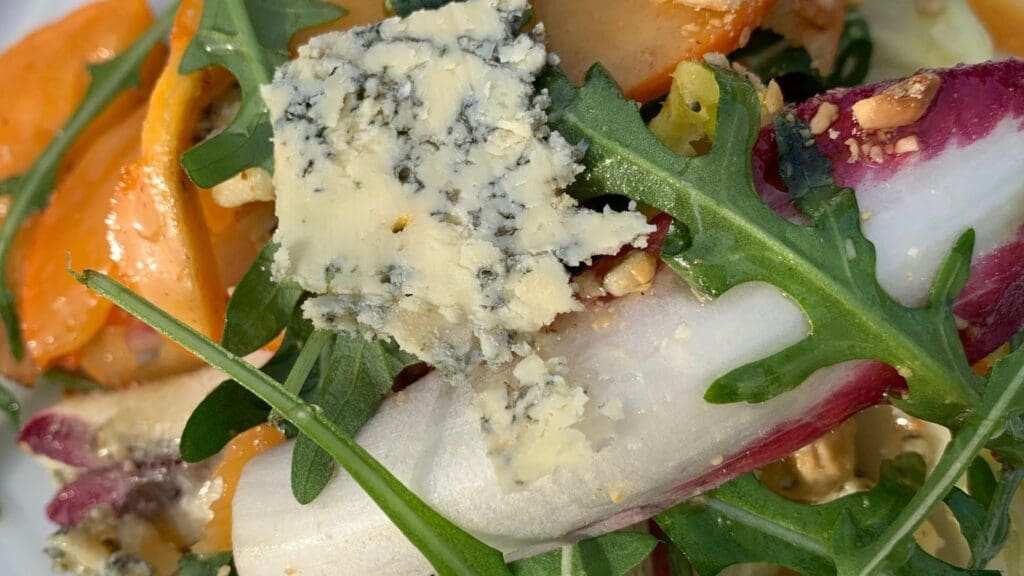
Bake-Off
Savoury scones, tarts and quiches are all improved with a crumbled hunk of stilton – try making this simple, Stilton & Asparagus Tart – a great dish for lunch and dinner or at parties.
Winging It
Stilton’s creamy texture makes it so easy to rustle up a smooth dip for crudites, a tangy dressing for wings, or a rich, creamy pasta sauce.
Recipes with White Stilton
The mildness of White Stilton allows for a wide range of pairings, making it a delightful addition to salads or fantastic served with just a few familiar accompaniments. It is a great alternative to feta cheese and is delicious used in cheesecakes, or as a quick and easy dessert topped with figs and drizzled with honey. These Mini Mango Cheesecakes, are so easy to make and will have your guests asking for more.
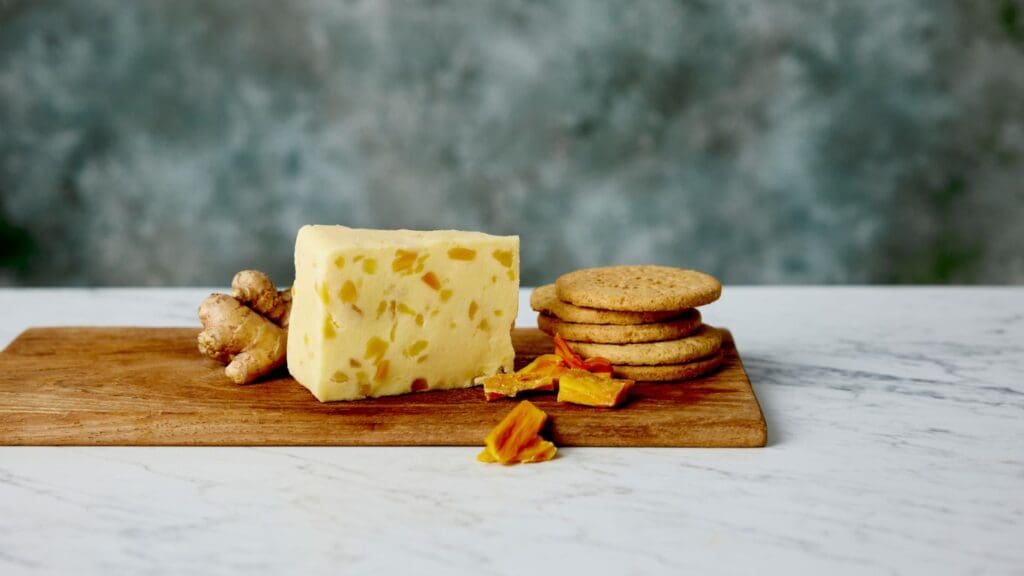
Meat-Free Meals
Whilst the type of rennet used in making Stilton is not governed by its PDO classification, many of the Stilton makers, including Clawson, use a vegetarian rennet, making it the perfect ingredient to add a savoury, umami dimension to non-meat dishes. Whilst its tangy bite pairs beautifully with the earthiness of beetroot and autumn squashes, it is just as sensational stirred through a warming soup or risotto.
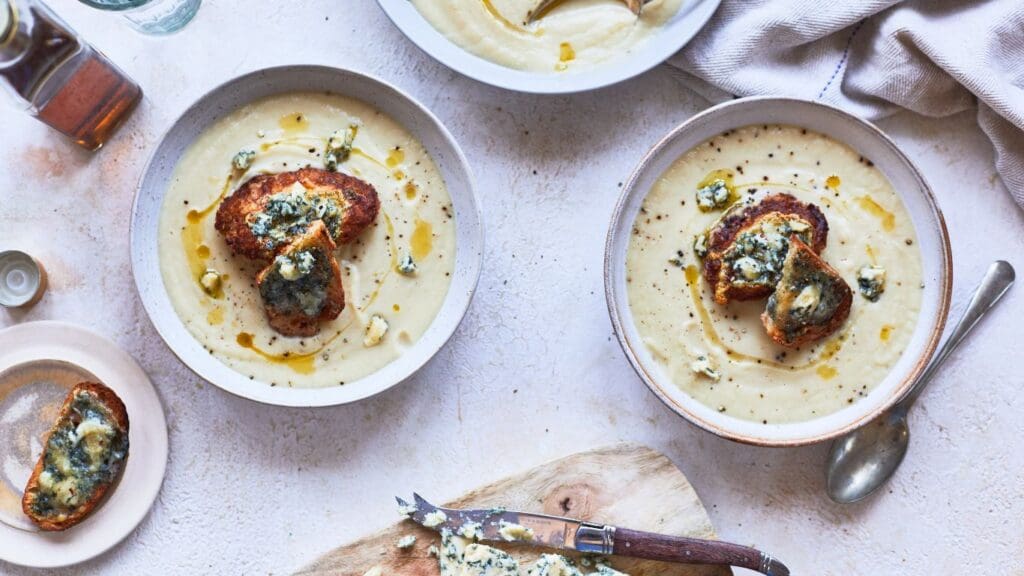
Shake It Up
YES! Crazy as it sounds, Blue Stilton® makes a great garnish – lending a savoury twist, or even as the base of your tipple, such as this Old Fashioned Blue Maple cocktail.
Where Can I Buy Stilton?
Blue Stilton®, White Stilton and White Stilton blends (eg with cranberries, or apricots or ginger) are available in most good supermarkets and specialist cheese shops worldwide and throughout the UK.

Hopefully, you will never feel the need to discard another piece of this magnificent, too-good-to-waste cheese again. For more recipe inspiration, check out some of these 1912 Artisan Stilton recipes.

Rachel Holding | Academy of Cheese Writer
Rachel loves a good cheese and wine session. Her love of all cheeses, artisanal or otherwise, has grown from her early years of working on the cheese counter at Fortnum & Mason. She has a personal mission to taste as many cheeses as possible and to encourage this passion in others.

